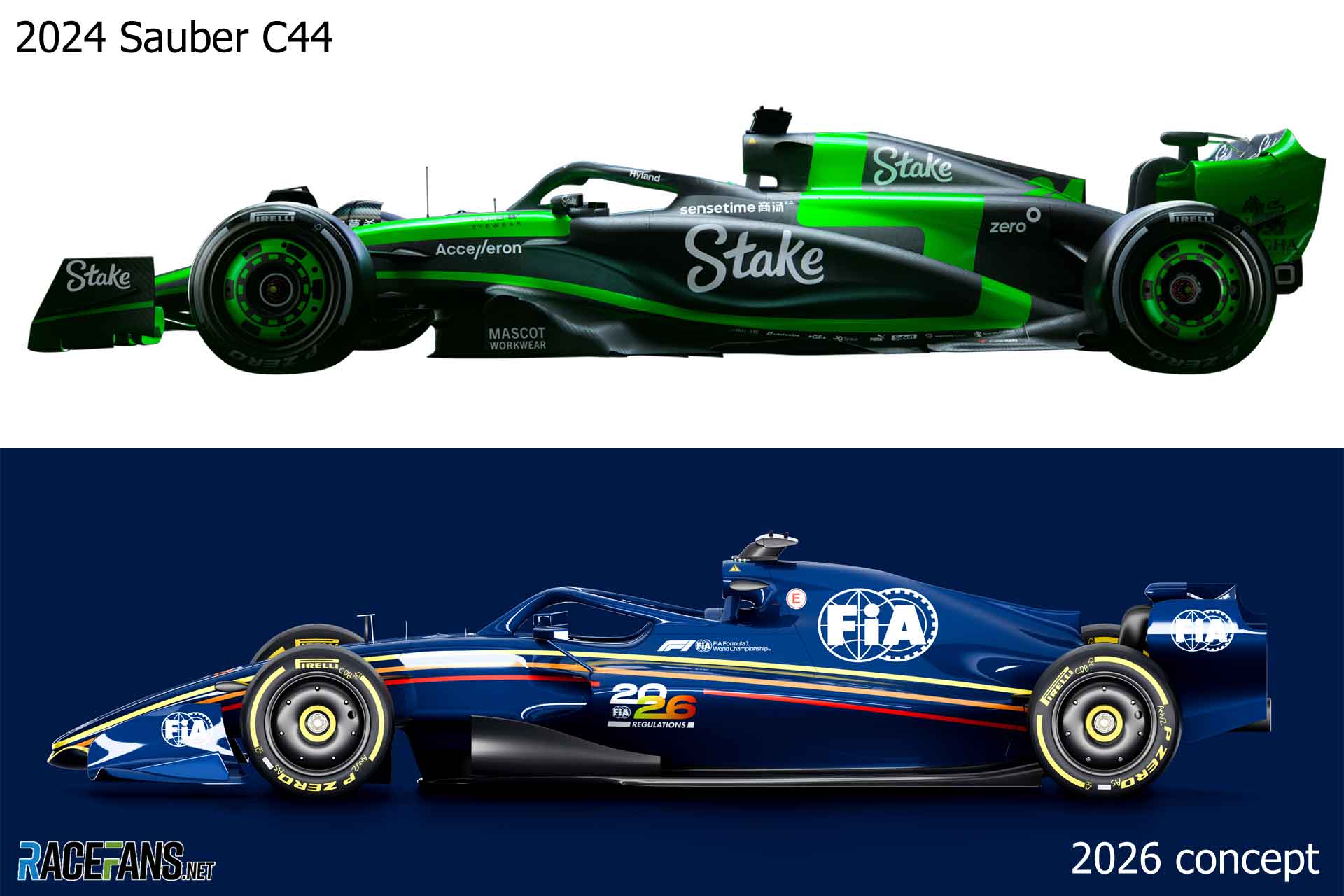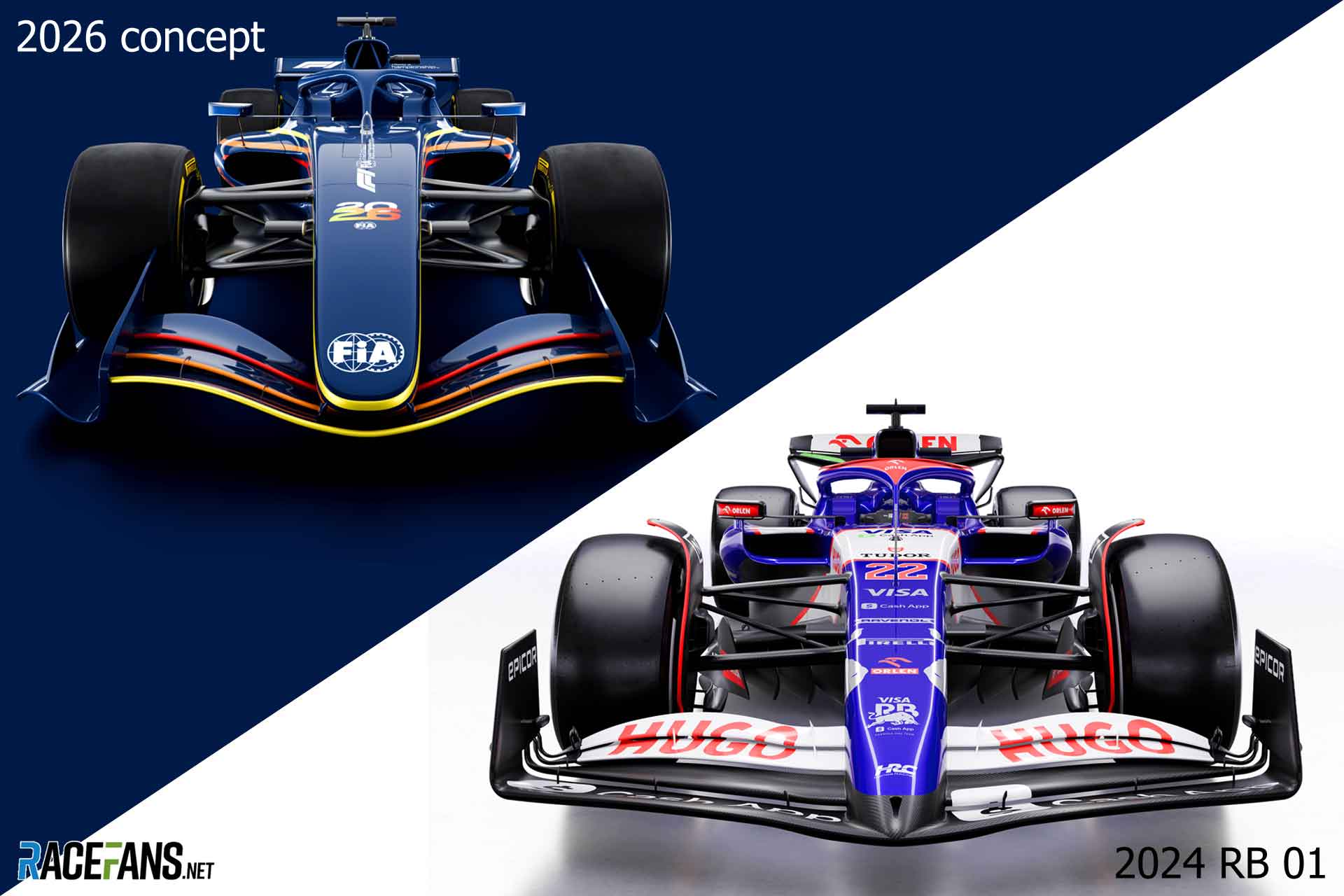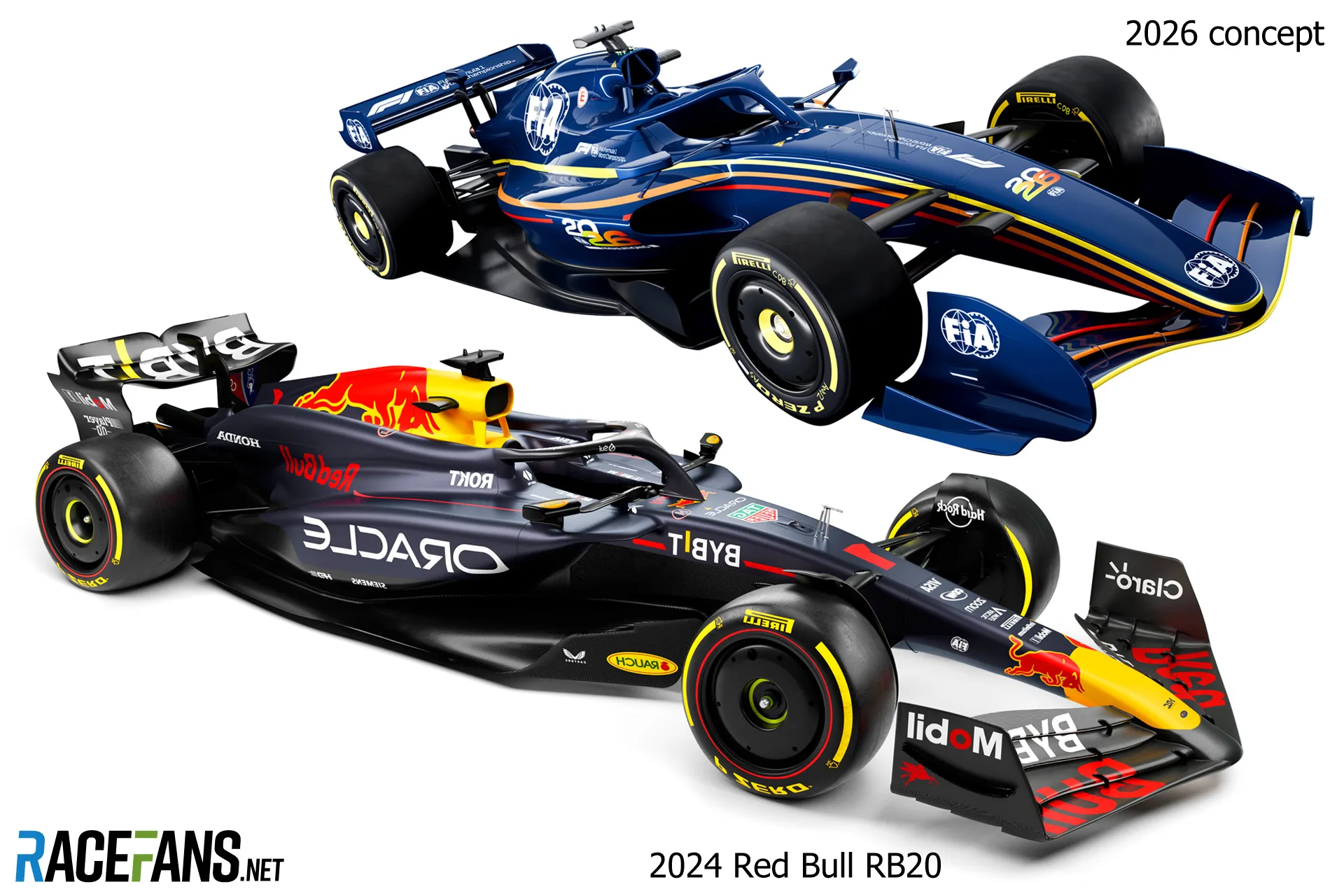The FIA’s head of future regulations, Paul Drewery, says that Formula 1’s upcoming technical regulations for 2026 will offer a “smaller, lighter car with no compromises to safety.”
For the first time, the governing body offered a detailed look at its vision for the future of Formula 1.
Following a bold return to ground effect aerodynamics in 2022, the reception to the current generation of F1’s cars has been mixed to say the least – both in terms of the way they drive and the racing they generate. But how will cars change when the sport introduces major new technical regulations alongside heavily revised power units following the end of next season?
Weight
With F1 cars having gradually increased in weight over time since the Overtaking Working Group regulations were first introduced in 2009 from just over 600kg to just under 800kg without fuel. But in 2026, the sport will see its first reduction in minimum weight in over 30 years.
Despite falling 30kg to 768kg, the next generation of F1 cars will still be heavier than those which raced in 2021 – and they were already the heaviest the series had seen at the time.
Naturally, reduced weight is key to the concept of a “nimble” car, as a lighter machine will demand from the power unit, tyres and gravity itself to round corners. But if Fernando Alonso was hoping to see cars return to more like his world championship-winning Renaults of the mid-2000s that he demonstrated in Abu Dhabi a few years ago, he will be disappointed – the 2026 cars will still be around 170kg heavier than those he and Lewis Hamilton raced.
Length
Current Formula 1 cars at around the longest they have ever been. For 2022, with the introduction of the current ground effect regulations, the FIA introduced a new maximum wheelbase length for the first time.
Advert | Become a RaceFans supporter and

As it stands, the regulations say that the total distance between the centre of the wheels on the front and rear axles must not exceed 3,600mm (3.6m) – that is almost in itself as long as Ayrton Senna’s 1991 championship-winning McLaren MP4-6.
That will change for 2026 – but not by much. The maximum wheelbase will reduce, but only a 20cm reduction to 3,400mm – a reduction of only 5.56%.
Width

Cars in 2024 are already narrower than they have been in years by. Back in the…
Click Here to Read the Full Original Article at RaceFans…

